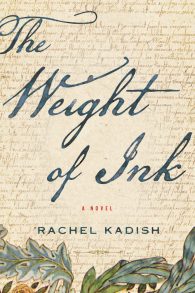Two women, living centuries apart, find commonalities through written letters.

“The Weight of Ink” is a work of historical fiction by Rachel Kadish, who braids multiple storylines, melding each narrative into a common theme of exile, love and desire for knowledge.
To read this book is to lose yourself in the changing landscape and geography of the Jewish community, skipping through time over several centuries and various continents: from the Inquisition in Portugal to the “New Jerusalem” of Amsterdam and 17th century London and Florence, then reconnecting the post-Inquisition communities to 20th century England, America and Israel.
Kadish, who is appearing Nov. 16 at the Book Festival of the Marcus Jewish Community Center, unravels the lives of two female characters whose lives are separated by more than 300 years. What these women have in common is an unwavering passion for scholarship.
Esther, living in the 17th century, asks: Must a woman’s mind wither in the prison of her body?
Helen, living in contemporary times, asks: How much must a woman sacrifice to reconcile the heart and the mind?
The two characters live out the answers by facing the challenges of the particular times they are born into.
The narratives are woven together through letters written by Esther and buried in a geniza (storage area) in London, to be found by Helen in the year 2000. In a midrash-like commentary, Kadish fills her readers in on the history, philosophy and geography around the actual words of the documents.
The letters discovered in the geniza are treated as precious heirlooms awaiting discovery, as if Esther, forced to stifle her mind by the circumstance of her time, finally found an air hole through which to breathe.

Houghton Mifflin Harcourt, 576 pages, $28
The exchange of email correspondence between contemporary characters seems so inconsequential in comparison with the weight of “gall ink” used in the 17th century, making letter writing both expensive and precious. One cannot help but wonder what kind of narrative we are leaving to the scholars of the 24th century, for example. What will they deem important or precious from our abundance of words electronically exchanged and indexed?
“The Weight of Ink” is a fantastic book-club book, as it offers so much material for every kind of reader. It is a literary mystery that poses questions we are still struggling with today.
How much of her desire must a woman sacrifice to have her voice heard and her mind taken seriously? Do we have the will to live beyond our traumas and retain our passions? And what does it take for a woman to persist growing when everything around her tells her to make herself smaller and shut up?
Author: Marita Anderson. Originally published on October 18, 2017 by Atlanta Jewish Times